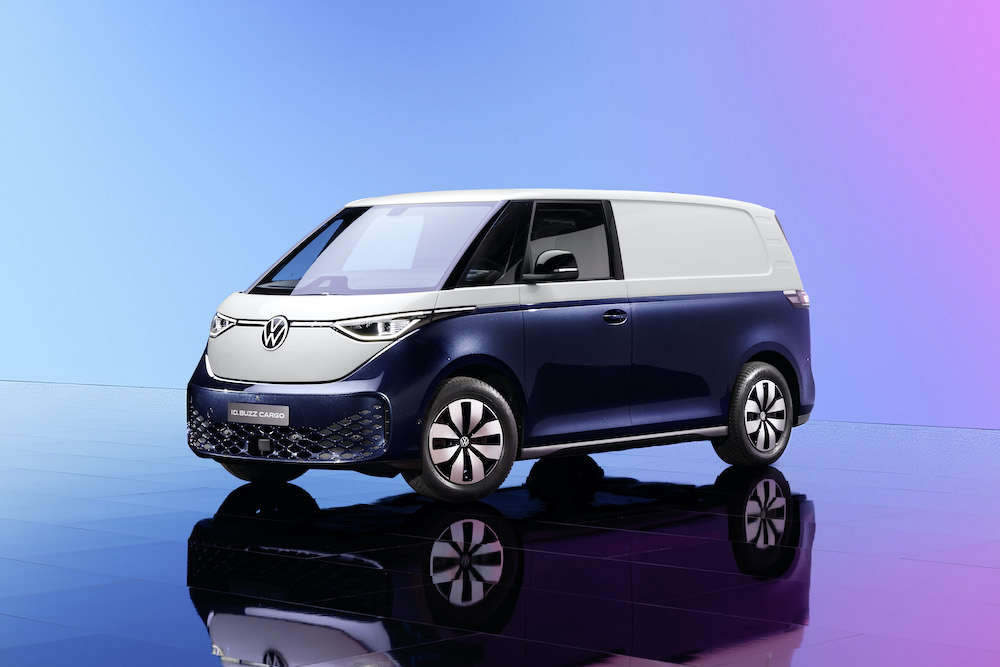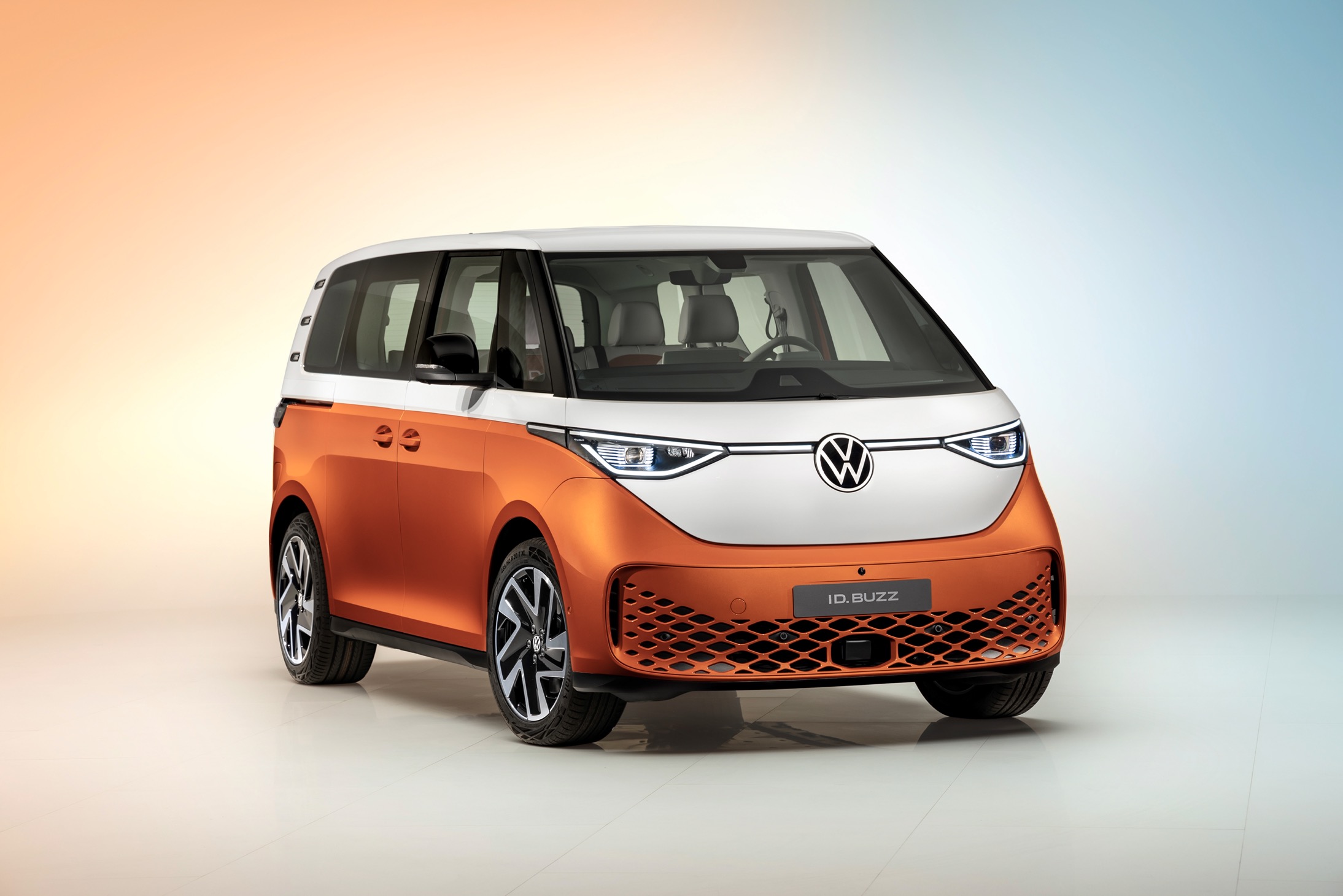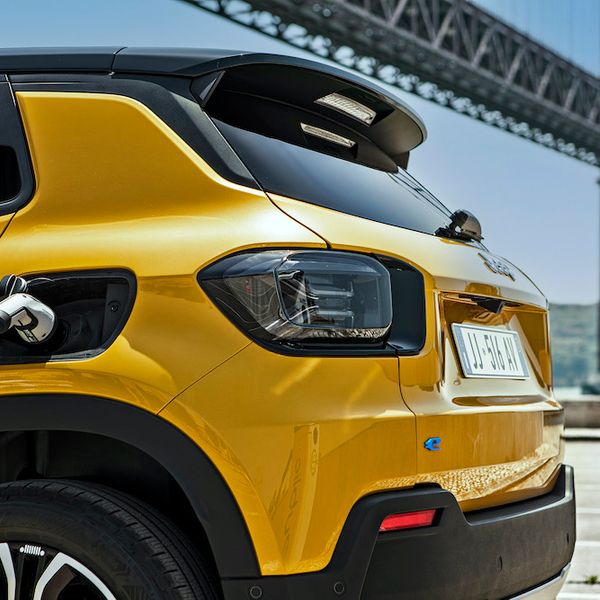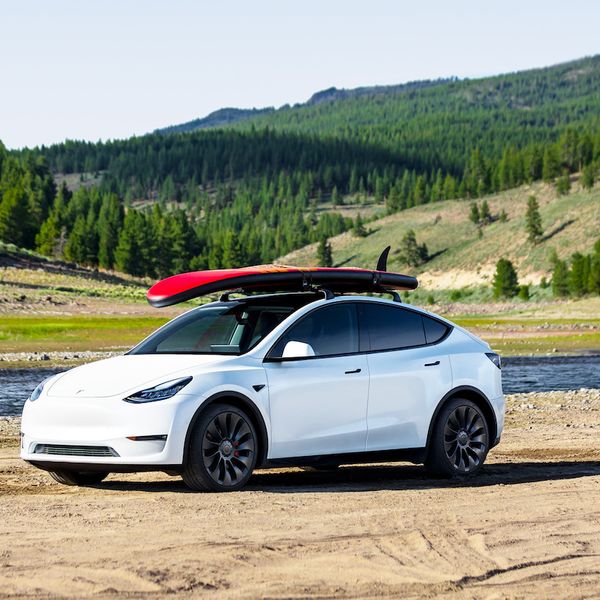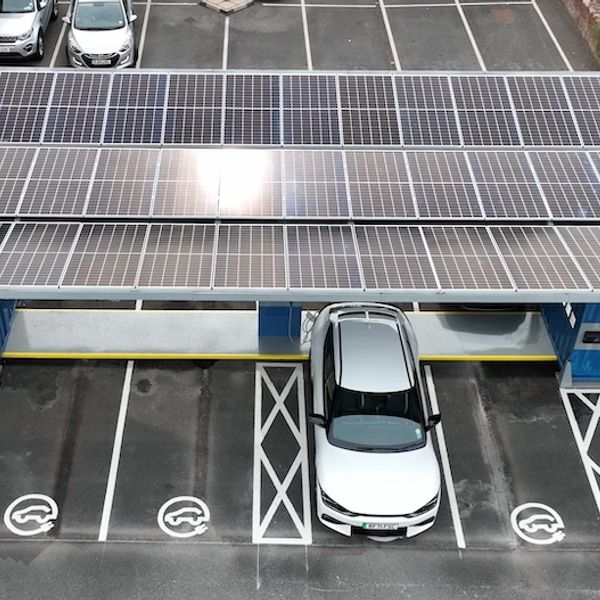But what exactly is she getting excited about? Well, we’ve had plenty of time to get used to ID. Buzz as it spent half a decade appearing at international motor shows in prototype form, wowing crowds with features that included a revolving dashboard gnome that sadly isn’t fitted to the production versions, which also have toned down front end styling, making them less retro, but presumably more crash test friendly.
New look, familiar underpinnings
VW has a standard electric vehicle platform called the MEB, and versions of it animate the ID.3, 4, 5, Skoda Enyaq and the Cupra Born. It will power many more electric models, including the ID. Buzz, but being a box on wheels it has small front and rear overhangs, in part because its stylists wanted a silhouette that paid tribute to the T2.
The end result is very 21st century, but the sloping nose, huge front and rear VW badges and a trio of fake air intakes at the top of the van’s C pillars are all nods to old Microbus. By the way, those air intakes used to suck in leaves that sometimes caused engine fires with the original ICE vans. Not a problem for Buzz drivers.
Air cooled VW van drivers sat over the front axle, so experienced a nodding dog ride. The ID. Buzz locates its front occupants further back where things are more serene, but they will still enjoy commanding seating positions at the front of the vehicle. With an 11 metre turning circle -about the same as a VW Polo- manoeuvring it ought to be painless.
Right now, it’s only being sold in short wheelbase form, which equates to a five seat bus or a van called the ID. Cargo, capable of taking a couple of Euro pallets, but a long wheelbase is imminent, and that in people carrier guise will have room for eight, with a variety of seating options. Interestingly the longer van won’t have its derriere extended, but will benefit from a floor pan stretched by around 25cm between the wheels.
![]() ID. Buzz is based on the same foundations as the ID.4, ŠKODA Enyaq and Cupra Born
ID. Buzz is based on the same foundations as the ID.4, ŠKODA Enyaq and Cupra Born 










